The gravel trend is booming — but cyclocrossing is too. With the Inflite and Grail Canyon has introduced a representative for each religion — and that’s just within a year. Not only are Canyon’s new steeds causing a rift but they’ve already bagged some victories. How is Canyon responding to the demands of each target group?
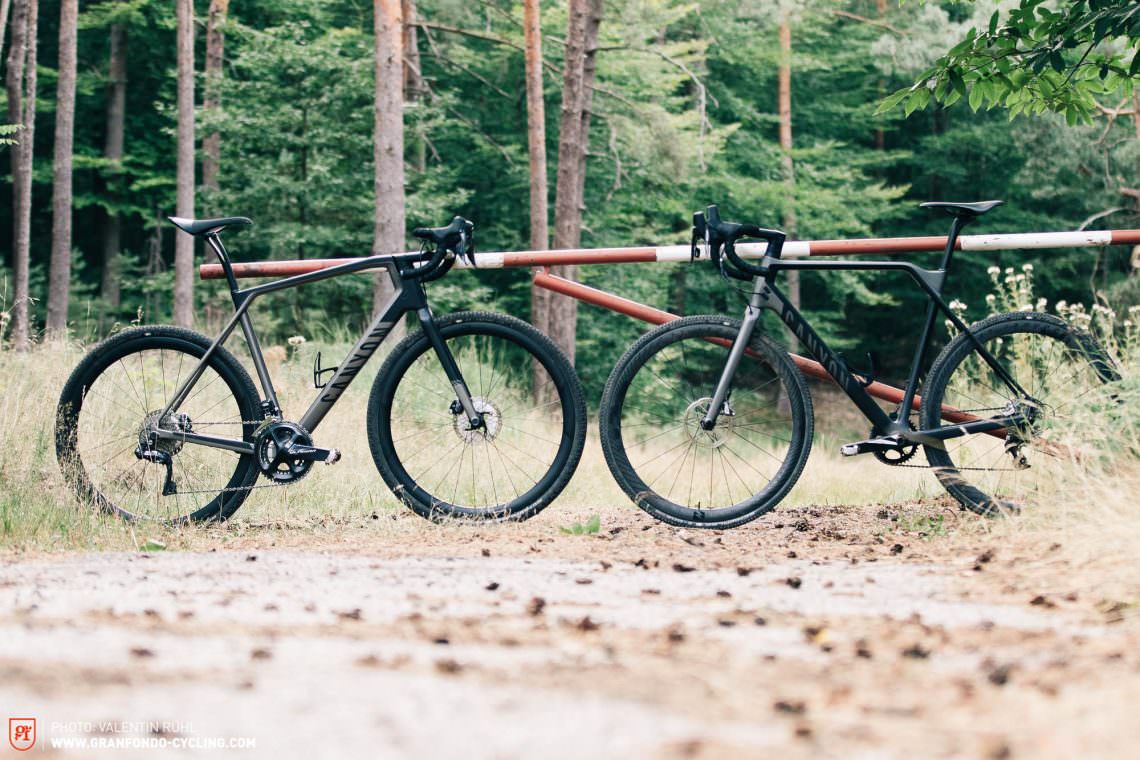
Whilst traditional cyclocross fans usually restrict themselves to mocking the gravel hype, hardcore gravel aficionados can find the cross world with its tight skin suits and “narrow” 33 mm wide tyres truly tasteless. But what are the differences between two disciplines that seem so similar on the surface?
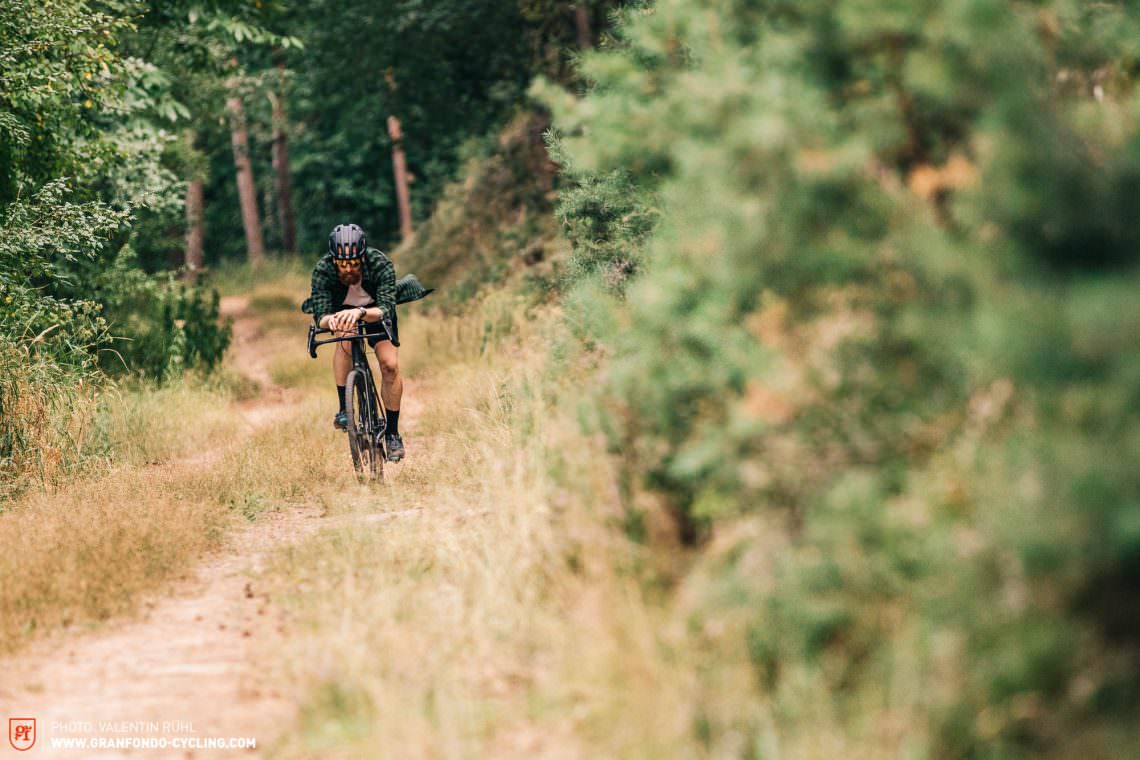
Cross vs. Gravel – Terminology
Cross, cyclocross or CX races have existed since the beginning of the 20th century and have always been shaped by a strong competitive spirit. Today the scene is still strongly focused on performance. In Belgium and the Netherlands the discipline has acquired close to cult status and there are a huge number of events including World Cups and a number of different racing series. All events are subject to strict UCI regulations which prescribe specific bike-measurements and even tire widths. As a consequence the creativity of manufacturers is strongly limited. Most cyclocross races take place on winding circuits — usually between October and March — and last around 40-60 minutes. Riders often have to shoulder their bikes to overcome obstacles and conquer steep, treacherous climbs surrounded by a cacophony of ear shattering cowbell sounds and motivational screams from beer-fuelled cross-fans cheering them on. Let’s recapitulate and generalize: Mud, cold, sprinting, skyrocketing heart rates, metallic taste in the mouth, suffering as a passion — a recurring pattern in the cross-sector. And of course French-fries, strong beers and Belgian waffles belong to the cross scene just like cream-cakes belong to the Black Forest.
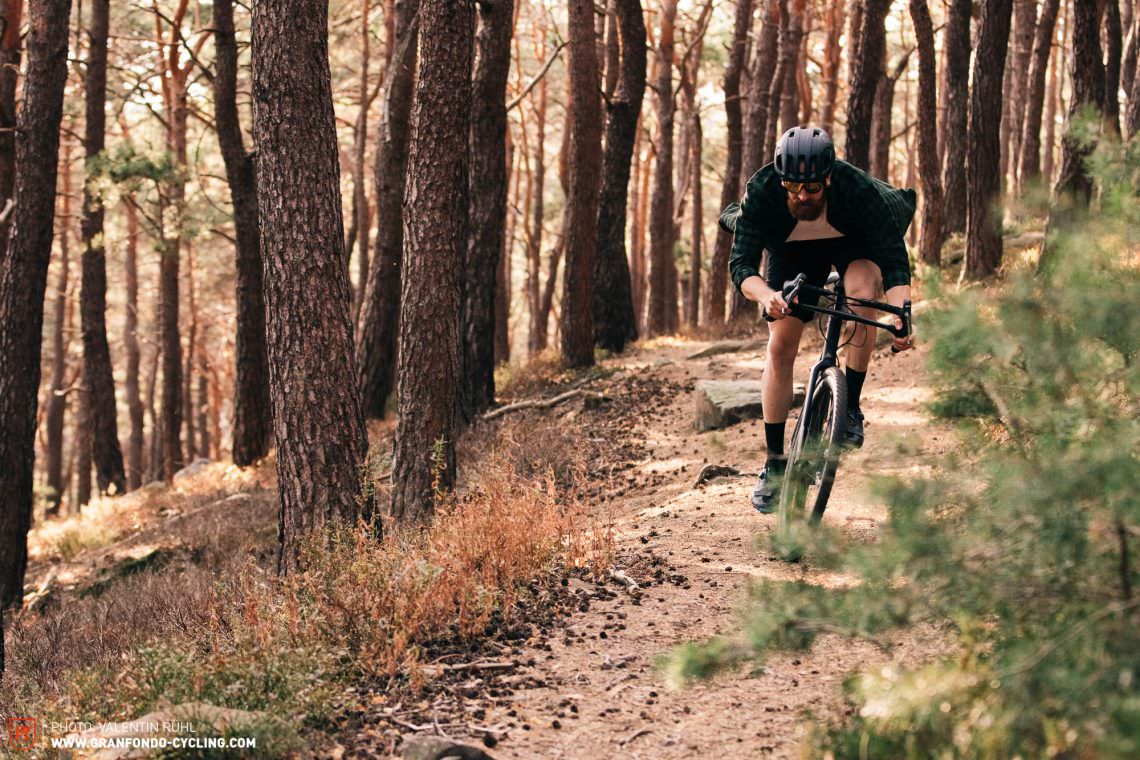
Our latest GRAN FONDO issue #010 features a guide on gravel. In case you want to find out more without having to wait until it is published on our website why don’t download our app today? It’s 100 % free.
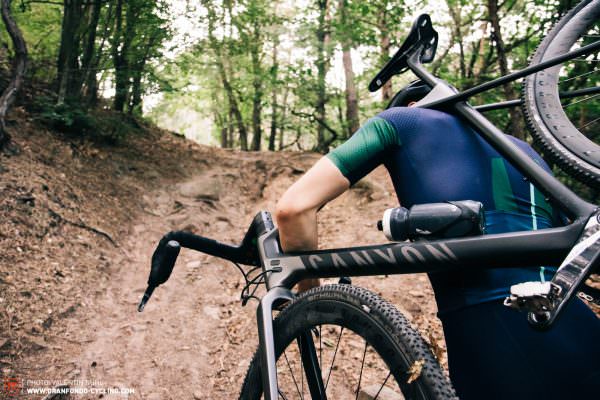
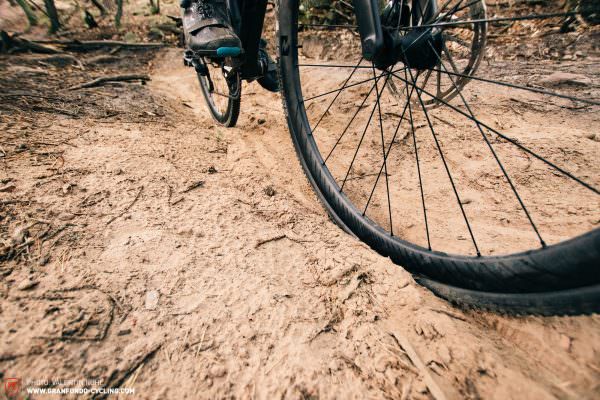
Canyon Inflite CF SLX 9.0 Pro Race
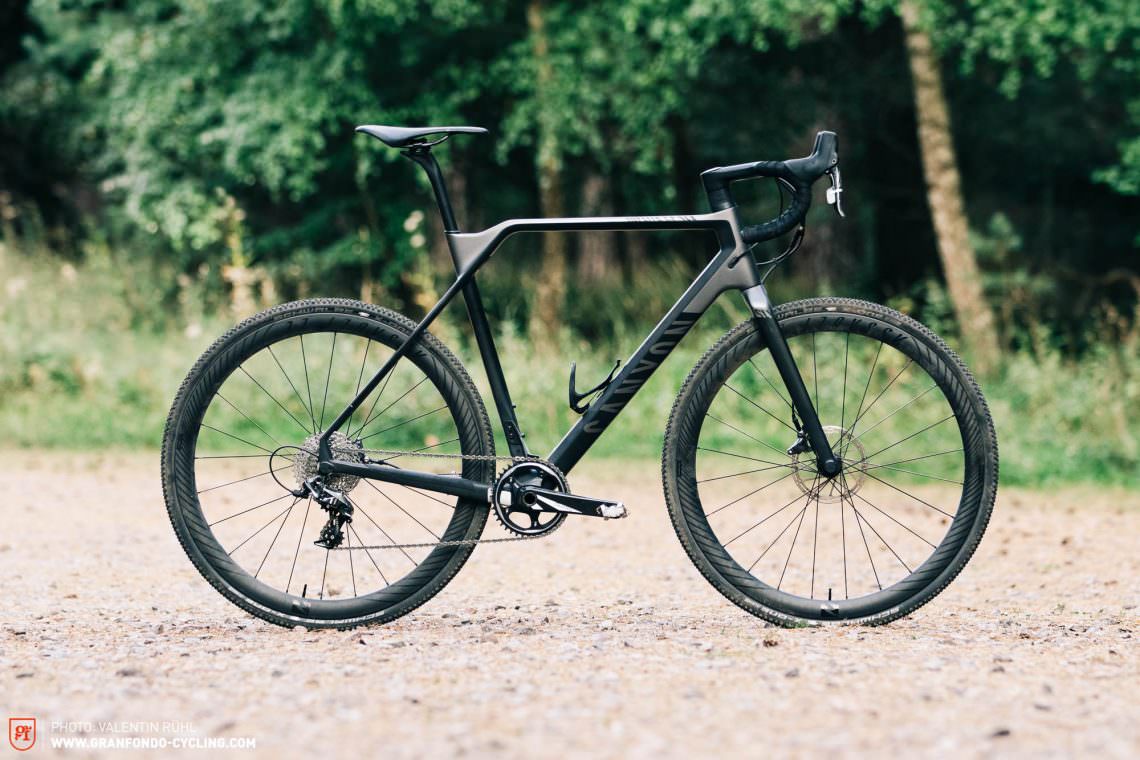
The Canyon Inflite features an uncompromising design that meets the demands of ambitious cyclocrossers. The performance-oriented approach is also reflected in the spec. The SRAM Force 1x drivetrain saves precious grams and offers the necessary gear range — just! The SRAM Force brakes are fitted with 160/140 mm rotors and provide the ideal setup for modern cyclocross circuits of which long descents are not a feature. Even the shape of the tubing has “cyclocross” written all over it: the layout of the top- and down-tubes allows for more room to accommodate the rider’s shoulders and creates an ergonomically-efficient frame-triangle. The bend in the top tube provides an optimal contact surface for the shoulders for carrying-sections and also allows for a longer extension of the seat post. This helps provide come damping and defuses the rigid character of the bike.
Drivetrain* SRAM Force CX1
Wheels Reynolds Assault Le Disc Carbon
Brakes* SRAM Force 160/140 mm
Tires Schwalbe S-ONE
Weight 7.65 kg
Price € 3,999
*Model 2019: SRAM Red ETAP, Red brakes, € 4,599
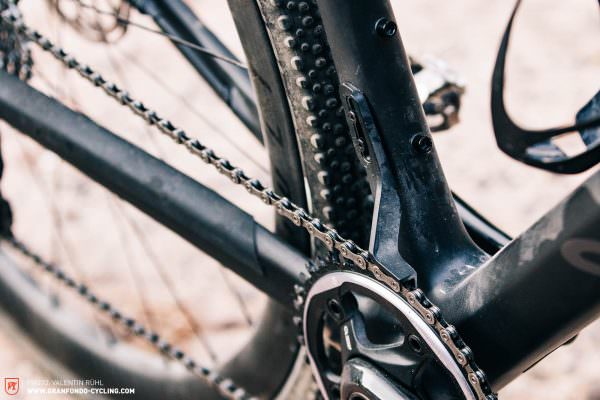

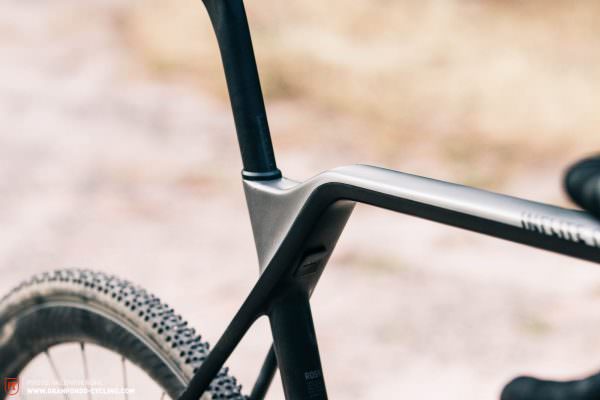
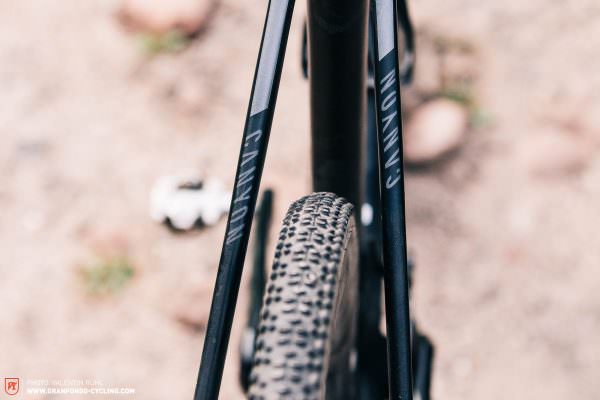
Canyon Grail CF SLX 8.0 Di2
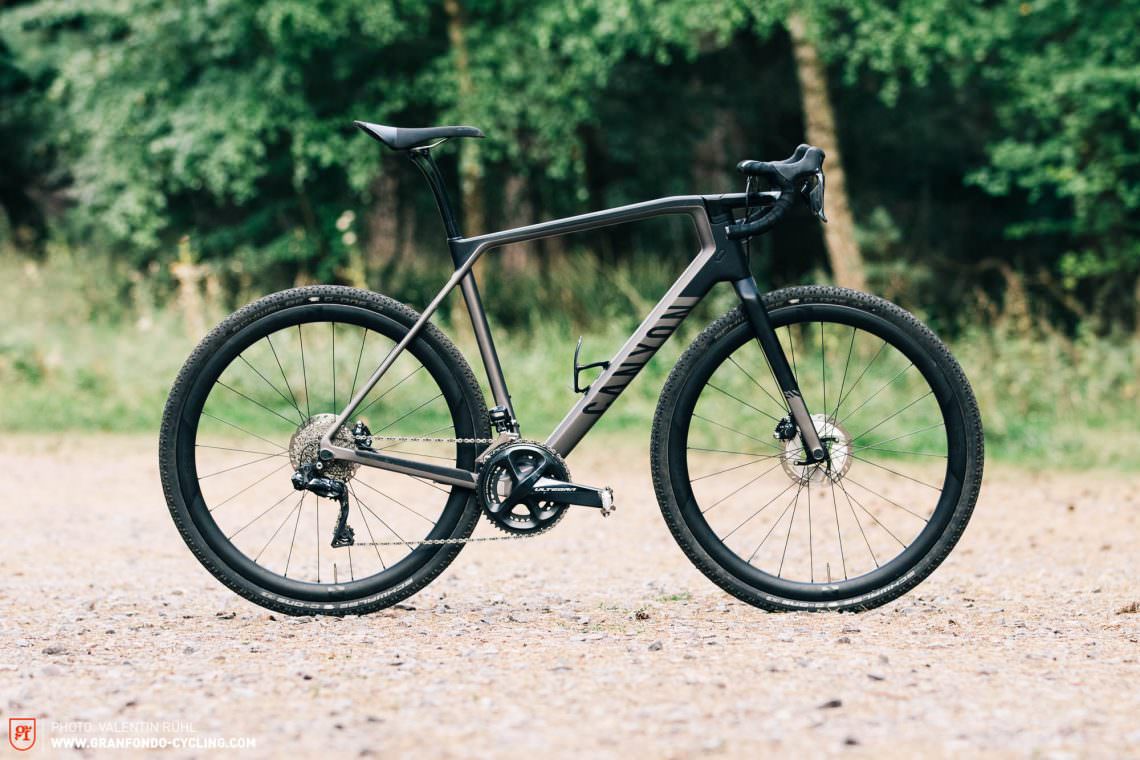
The cockpit is probably the most striking feature of the Canyon Grail. The double-decker handlebar is designed to improve control and comfort in a number of situations. According to Canyon, the real issue with conventional handlebar/stem combinations is that the stiffest area in the bars is in the tops whilst the flexiest point is found in the drops — and that’s the problem right there! Because in reality you’re looking for maximal comfort when cruising in the tops and for uncompromising stiffness when sprinting in the drops. But this problem also affects gravel riders whether they want to challenge their riding buddies in the final point to point sprint or embark on relaxed multi-day gravel tours. That said, this is only one side of the story: when you ride on technical terrain or coarser gravel you’ll inevitably end up grabbing for the drops — simply because this is the safest and most practical braking position. In these situations that the Hover Cockpit does exactly the opposite — after all these handlebars are stiffer in the drops than most conventional models. The bar does still offer you the choice of different grip positions but if you want to change the bar height by adding or removing spacers your options are rather limited. If you want, you can move the standard 15 mm spacers on top of the stem but this option will totally spoil the neat integration and sleek look.
Drivetrain Shimano Ultegra RX Di2
Wheels Reynolds Assault ATR Disc Carbon
Brakes Shimano Ultegra 160/140 mm
Tires Schwalbe S-ONE Bite
Weight 8.18 kg
Price € 4,499
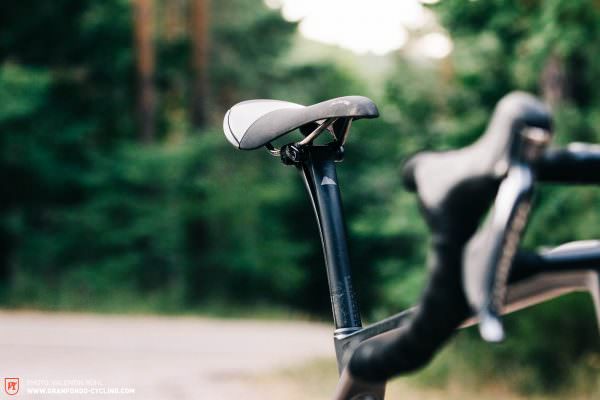

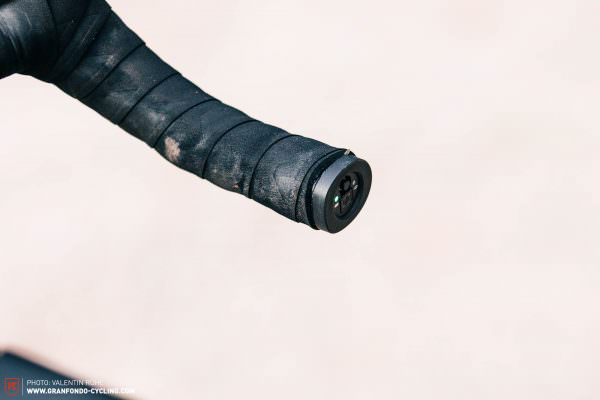
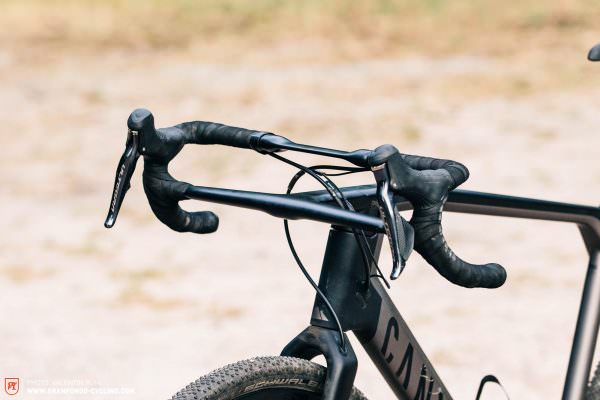
Comfort is a recurring theme on the Grail — the highly flexible leaf spring carbon seat post and the chunky 42 mm tyres are just two examples. You can find more details on the latter in our gravel-tyre test on page X. With this clever mix of components the Grail wants to be ready for all types of terrain. The Shimano ULTEGRA Di2 groupset underlines the bike’s all-round character. The closely spaced gear-jumps and wide gear range of the 2×11 drivetrain are intended to make the Grail as versatile as possible. In cooperation with Topeak the people at Canyon have developed a line of bags designed specifically for the Grail.
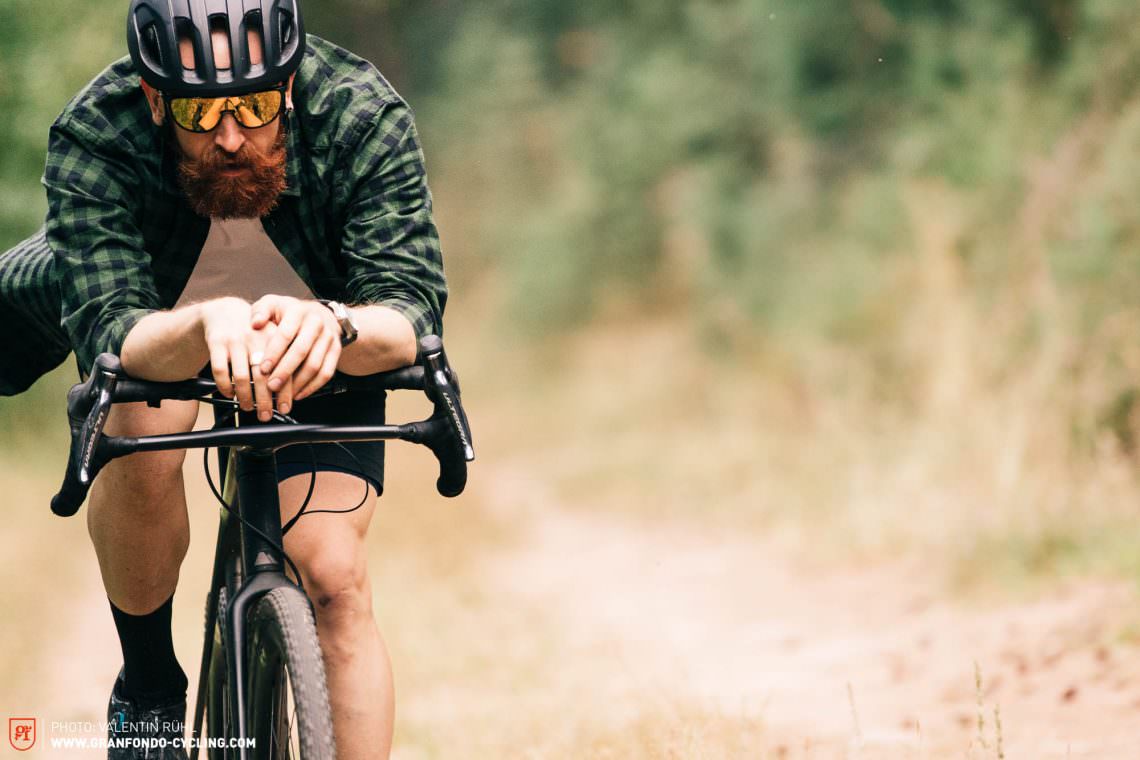
The geometries
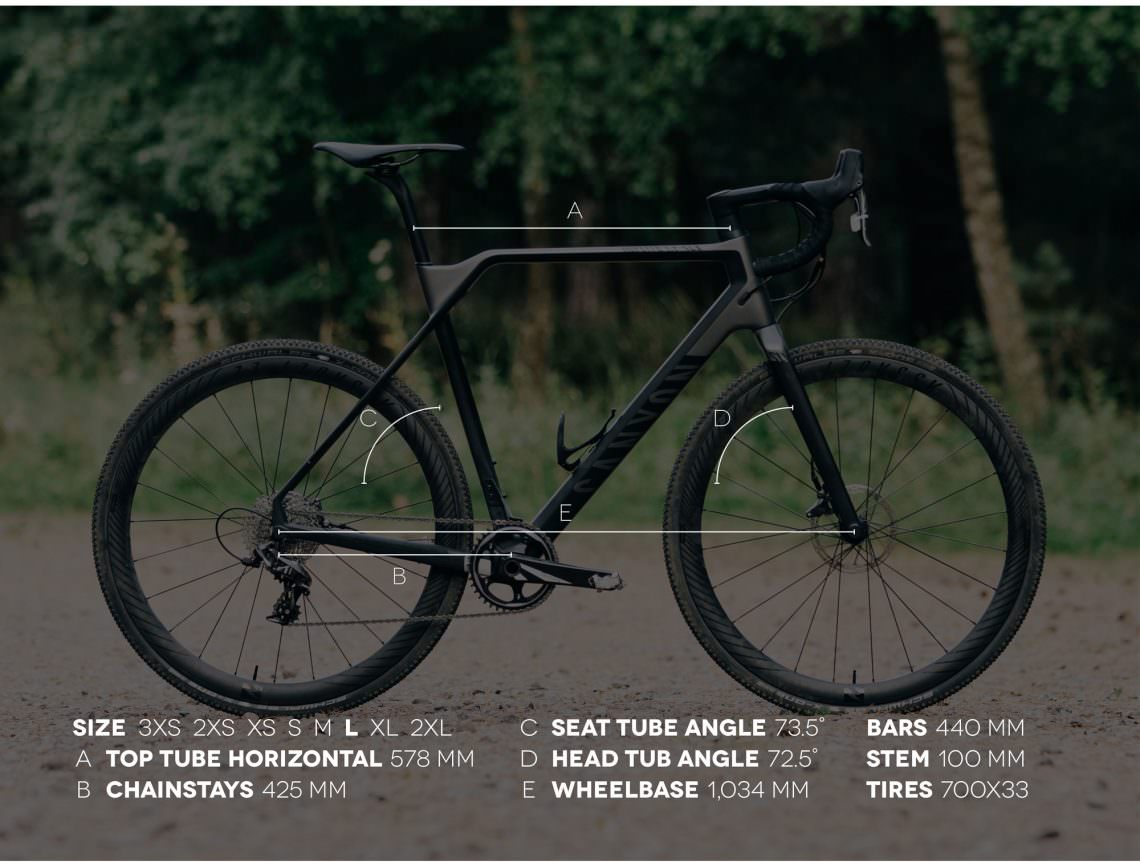
Cross and road bike geometries are known to share similar geometry: a short wheelbase for good cornering characteristics and increased clearance for chunkier tyres. When designing the geometry of the Inflite the engineers at Canyon took inspiration from the mountain bike sector. The geometry features a longer reach and longer wheelbase than conventional cross bikes and provides an overall smoother ride. The H31 cockpit has been modified to work with a shorter stem and wider handlebars and to follow steering inputs more directly. But the shorter stem doesn’t spoil the sporty riding position at all — quite the opposite. The position feels very sporty indeed but doesn’t stretch beyond the head tube making for a comfortably centred riding position. The idea is to distribute the grip more evenly between the front and rear wheel. The relatively steep head angle of 72.5° allows you to master even the tightest of corners even when riding at low speed. Considering that even cross-pros rarely exceed an average speed of 25 km/h and often ride through the tight corners of cyclocross-tracks at walking speed the numbers make sense.

According to Canyon’s engineers it would have made little sense to apply standard stack and reach values on the Grail — the special construction of the top tube and the cockpit require some different numbers. Canyon’s special measuring system called stack+ and reach+ uses the centre of the bar-tops as a reference point. As with a conventional “stack-to-reach” approach the following rule applies: the lower the stack+ and reach+ quotient the more aggressive the riding position. The riding position of the Grail (quotient of stack+ and reach+: 1.44) lies right in between a Canyon Endurace (1.47) and a Canyon Ultimate (1.38). This riding position should both allow you to enjoy long days in the saddle with the required comfort and to ride actively on uneven terrain. The wheelbase in size M is 40 mm longer than a Canyon Endurace and provides a comparatively smoother ride. In order to achieve the desired agility Canyon took inspiration from the MTB sector and provided the Grail with a compact 90 mm stem in size L.
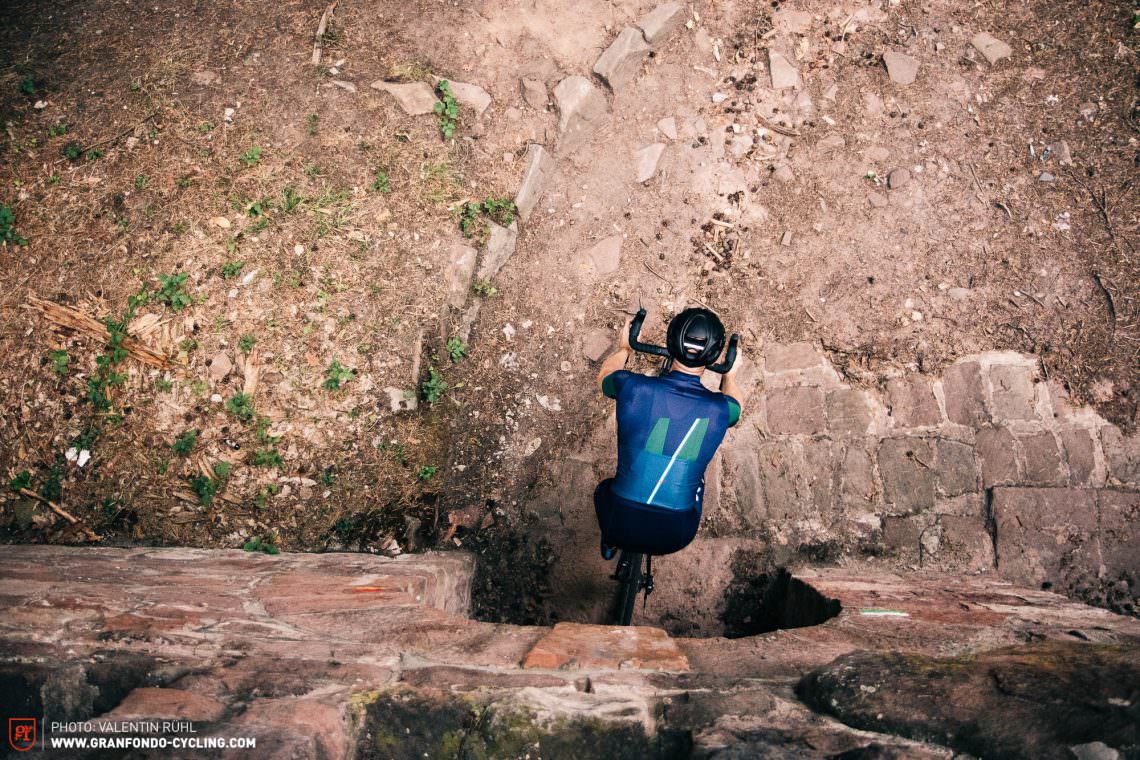
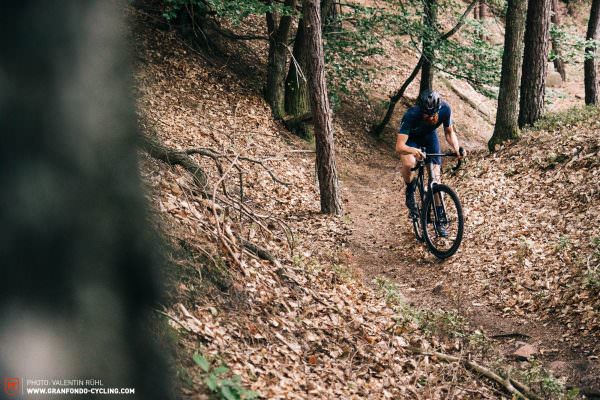

Despite two significantly distinctive geometries both bikes share a special feature: 650B wheels in small frame sizes. This allows Canyon to offer a harmonious geometry concept suitable for riders under 1.60 m.

Practical test — direct comparison
In order to work out the specific riding characteristics of each bike we compared them on a neutral test track before taking them into their respective natural habitats! The Inflite turned out to feel way more agile at start-up and in acceleration. The Grail feels a little more comfortable and also offers good directional stability at cruising speed. This is exactly where the Inflite struggles. As with a pair of carver skis, you have to ride on the edge and actively all the time — which feels rather awkward when riding tours and also requires constant attention. This can be tiring on long rides. Whilst the Grail offers good control and inspires confidence in wide and fast corners it tends to slant towards the inside of the corners at lower speeds. The Inflite’s lively character handles twisty trails more playfully and follows each steering input very directly. This precision requires a trained hand at high speeds.
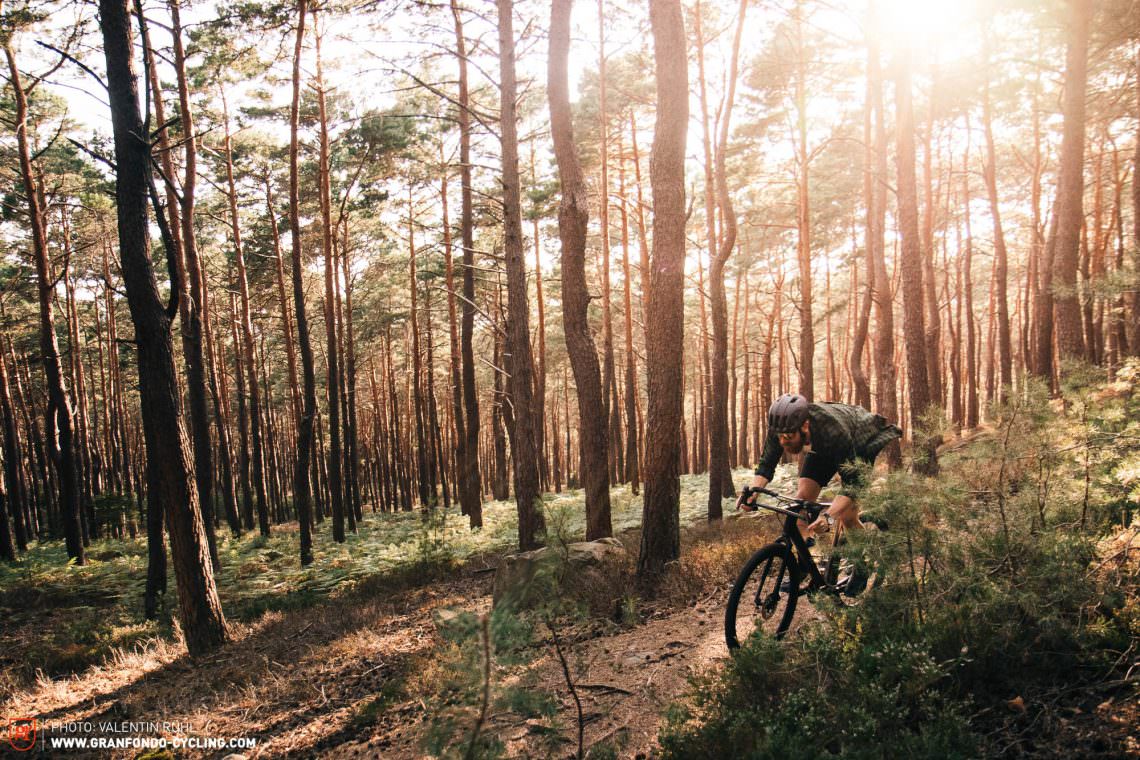
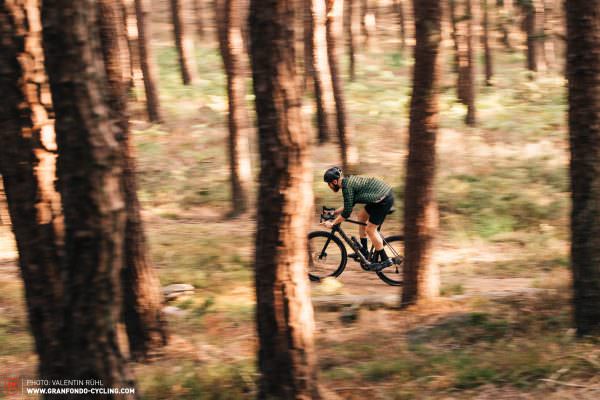

Experienced riders will get their money’s worth but less experienced ones could feel overwhelmed by this much precision. The relatively narrow 700 x 33C tyres of the Inflite don’t help here either. If your line choice is off, the small tyre volume offers very little reserves. That’s where the chunky tyres and 440 mm handlebars of the Grail come in handy, offering a much bigger safety margin. When riding at the limit the Grail lacks predictability — the unbalanced comfort distribution is mainly responsible for this. Despite reaching the threshold much sooner the Inflite remains honest and predictable at all times. The honest and direct feedback also reflects on the riding comfort of the Inflite: it’s simply a full-blooded and finely tuned racing machine. The Grail offers a significantly higher degree of comfort but is not as well balanced. Whilst the highly-flexible seatpost absorbs most of the nasty hits at the back, the front-end can’t keep up — but this also depends on where your hands are placed. When the climb gets steep the Inflite requires a massive pair of quads and a high tolerance for large gear jumps. The finely graded gears of the 2×11 drive on the Grail make it easy to climb and find the right gear.

So which bike is for who?
One thing becomes clear straight away: despite sharing similar geometries the Inflite and the Grail are two entirely different machines — and the handling is totally different too. Both are new school representatives of their genre, both feature unique solutions and both prove that the market is rapidly adapting to the new segmentation-trends of the bicycle industry. With its refined handling, the Inflite is aimed at all speed-freaks who can’t help but keep their pulse above the 180 bpm mark during their entire workout. The playful character begs you to blast out of every corner and tickles the competitive spirit of all passionate lactate junkies with off-road skills. A genuine cross bike with racing ambitions.
The Grail too keeps going when the tarmac ends but it feels most comfortable on gravel highways and in a straight line. This makes it more of a gravel specialist than a gravel all-rounder. The Hover cockpit is an exciting concept, but is not yet mature enough for everyday gravel life. And why? Because the added comfort is handy in some situations but sets you back in others. If you are likely to venture further afield and explore off the beaten track on your daily training lap, this is definitely an efficient option.

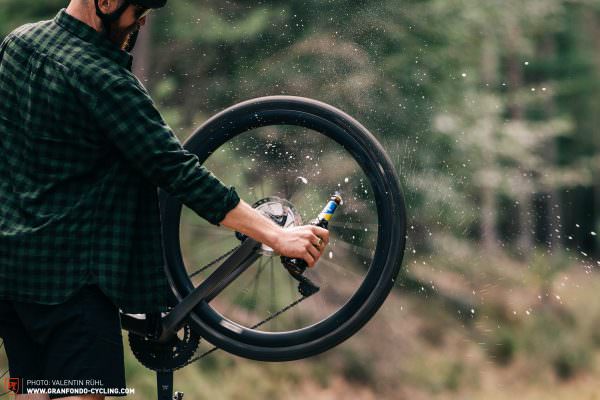

Conclusion
Our test clearly shows that there is no winner and no loser in a direct comparison between a gravel-bike and a CX-rig. But in the end it was the uncompromising character of the Inflite that convinced us the most — it’s completely in tune with its intended purpose and overall concept. The Grail, on the other hand might not be as uncompromising — but it’s certainly special. The technical solutions are truly fascinating but sometimes not entirely thought through (e.g. cable routing, spacers). On the other hand we’re not sure that there would be many buyers willing to spend their money on such a specific bike. When it comes to gravelling we are huge fans of all-rounders — because they give us the freedom to do it all!
The Grail and the Inflite are two radical representatives of their genres and the gap between them is huge. Perhaps Canyon will come up with a simpler and more minimalist gravel concept which observes the strict UCI regulations but also allows for mudguards. No matter how extreme each category might become, most riders would rather have a great all-round option they can use in different situations. Maybe the Canyon Grail AL can build this bridge? If so, find out here!
For more info head to: canyon.com
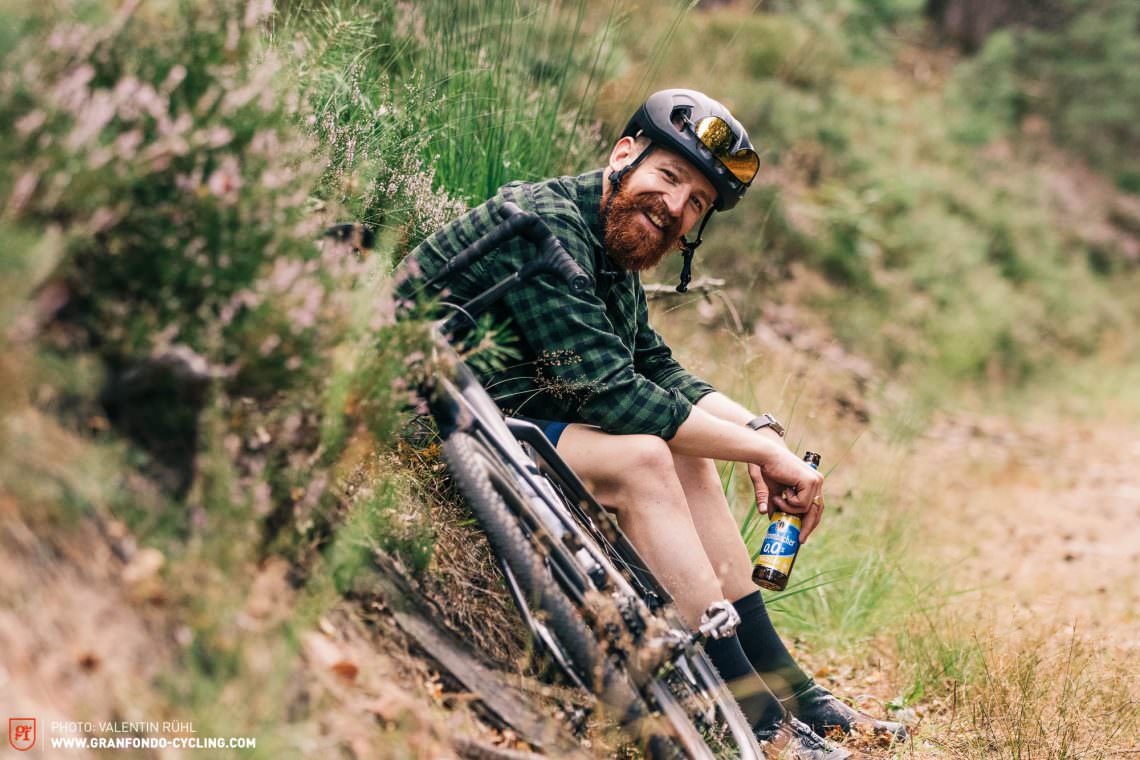
This article is from GRAN FONDO issue #010
GRAN FONDO Cycling Magazine is published in a digital app format in both English and German. Download the app for iOS or Android to read all articles on your tablet or smartphone. 100% free!

Did you enjoy this article? If so, we would be stoked if you decide to support us with a monthly contribution. By becoming a supporter of GRAN FONDO, you will help secure a sustainable future for high-quality cycling journalism. Click here to learn more.
Words: Photos: Valentin Rühl









